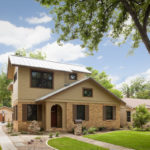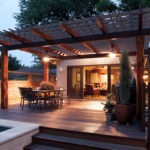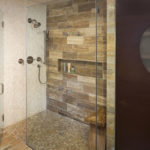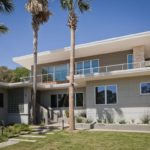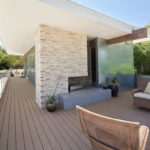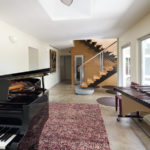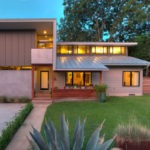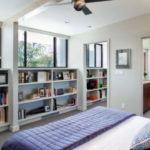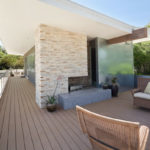In lieu of purchasing a new residence in a down real estate market, a growing number of homeowners nationwide have opted for whole-house renovations or large add-ons to their existing homes. For Austin, Texas-based CG&S Design Build—a specialist in residential remodeling—this increase in remodeling and renovation activity has presented the company with additional opportunities to showcase its sensible, practical, and cost-effective approach to sustainable home remodeling. And three projects recently completed by CG&S—all primarily second-story additions—have been recognized as local standouts and featured on various green- and architecture-related home tours, including Austin’s Cool House Tour. They’re sustainable, they’re practical, and they’re some of the hippest homes in the country.
Nearly every major residential expansion CG&S undertakes features several similar sustainable elements: tankless water heaters, expanding-foam insulation, proper siting of windows to capitalize on natural daylighting and breezes, etc. “[Tankless water heaters and foam insulation] have a quick payback time,” CG&S project designer Mark Lind says. He goes on to explain that a tankless heater can be installed on an exterior wall to free up valuable space in a small home, and he adds that expanding-foam insulation edges out regular insulation by sealing all gaps around a house where air can penetrate. The firm incorporates such sustainable elements into each of its additions while also working to keep the projects distinct—in their locations, design features, ages, sizes, and more.

Featuring a rain-harvesting butterfly roof and a 5 kW solar array, the Vale Residence was featured on the National Association of the Remodeling Industry–Austin’s Tour of Homes.
Completed in May 2010, CG&S’s renovation of the Vale Residence—which eventually landed on the National Association of the Remodeling Industry–Austin’s Tour of Homes—occurred under two different owners. One was more interested in a redesign within the existing footprint, and the other wanted a second-floor addition. “Since we had two additions with two owners, we tried to use similar materials, forms, and details to tie the two phases,” Lind says. During work with the second owner, the firm designed an inverted butterfly roof that would collect rainwater from the second-story addition, and the project also features a five-kilowatt active solar array.
CG&S also oversaw a 1,300-square-foot expansion of the Yium Residence, which was originally constructed in the mid-1930s as a 2,000-square-foot home. Completed roughly two years ago, the addition features reflective metal roofing and a sealed attic to keep humidity out. Perhaps most dramatically, to comply with nonnegotiable coverage limits on-site, CG&S stacked the new space over the existing one-story house, adding all 1,300 square feet as part of a new second floor that includes a master bedroom.
“Stacking a residence is one way to save energy,” project architect Marsha Topham says. “When you stack a home, the building envelope is smaller, and there’s only a small roof area from which to lose heat.” The home eventually earned a spot on Austin’s Cool House Tour.

The Morgan Residence eschewed the bells and whistles of other additions but performs extremely efficiently because of its passive-solar design and effective cross-ventilation.
CG&S completed a third project, the 900-square-foot expansion of the Morgan Residence, designed as a passive-solar home, in March 2010, and it presented some particular challenges. “It was located in a floodplain,” Lind says. “There are limits as to how much you can expand in a flood plain, and the city made us stay in the existing home’s footprint, so we [again] went straight up.” Additionally, CG&S had to comply with the McMansion Ordinance, a local provision that that limits the size and extent of new construction and additions in order to “protect the character of Austin’s older neighborhoods.” In response, the firm pushed the second-floor addition—which included a master suite and loft space—to the back of the home, which preserved some of the original single-story feel of the house from the street.
While this renovation didn’t incorporate costlier elements such as integrated geothermal or solar systems, Lind still focused on making the residence a passive-solar house via window orientation, roof overhangs, and effective cross-ventilation. And since completion, the home has been featured on a tour of its own, the most recent AIA Austin Homes Tour. “It may lack the bells and whistles of more expensive systems,” Lind says, “but it performs extremely well as a sensitively designed passive solar home.”
- The Morgan Residence eschewed the bells and whistles of other additions but performs extremely efficiently because of its passive-solar design and effective cross-ventilation.
- Featuring a rain-harvesting butterfly roof and a 5 kW solar array, the Vale Residence was featured on the National Association of the Remodeling Industry–Austin’s Tour of Homes.


